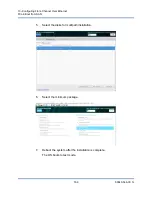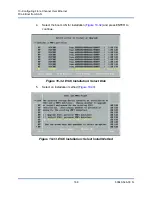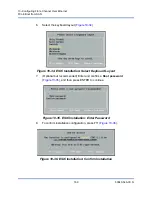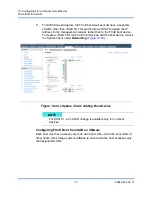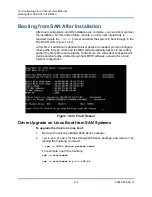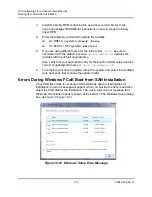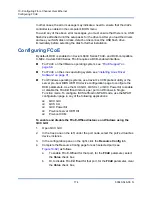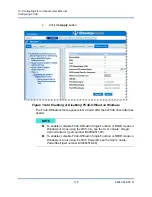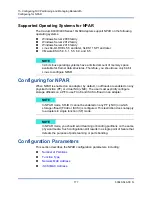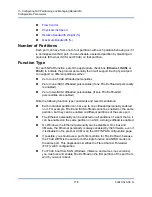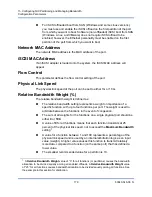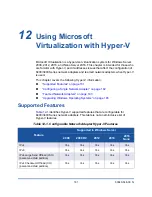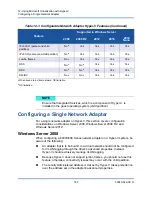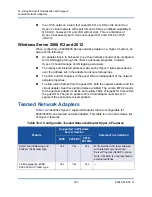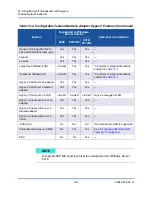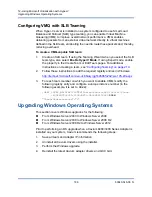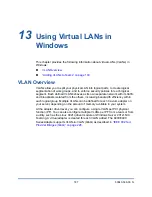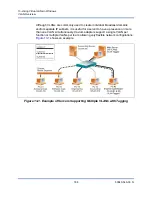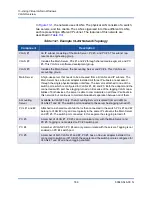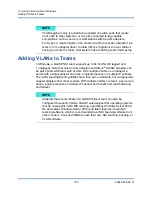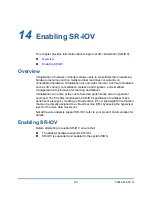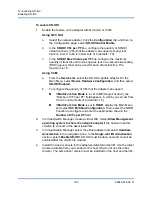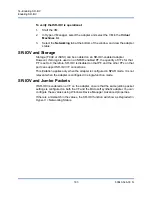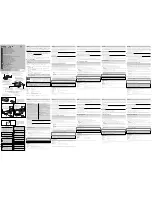
11–Configuring NIC Partitioning and Managing Bandwidth
Configuration Parameters
179
83840-546-00 N
For iSCSI offloaded boot from SAN (Windows and some Linux versions),
you must use and enable the iSCSI offload on the first partition of the port
from which you want to boot. Software (non-offloaded) iSCSI boot from SAN
(Windows, Linux, and VMware) does not require iSCSI offload to be
enabled; however, the Ethernet personality must be enabled on the first
partition of the port from which you want to boot.
Network MAC Address
The network MAC address is the MAC address of the port.
iSCSI MAC Address
If an iSCSI adapter is loaded onto the system, the iSCSI MAC address will
appear.
Flow Control
This parameter defines the flow control setting of the port.
Physical Link Speed
The physical link speed of the port can be set to either 1G or 10G.
Relative Bandwidth Weight (%)
The relative bandwidth weight is defined as:
The relative bandwidth setting represents a weight or importance of a
specific function, with up to four functions per port. The weight is used to
arbitrate between the functions in the event of congestion.
The sum of all weights for the functions on a single physical port should be
either
0
or
100
.
A value of
0
for all functions means that each function transmits at 25
percent of the physical link speed, not to exceed the
Maximum Bandwidth
setting
7
.
A value for a function between 1 and 100 represents a percentage of the
physical link speed and is used by an internal arbitration logic as an input
value (weight). A higher value causes this function to transmit relatively
more data, compared to a function (on the same port) that has defined a
lower value.
The smallest recommended value for a partition is 10.
7
A
Relative Bandwidth Weight
value of “0” for all functions (or partitions) causes the bandwidth
allocation to be divided equally among all enabled offloads. A
Relative Bandwidth Weight
value
of “25” for all functions causes bandwidth allocation to be divided equally among all functions. See
the example in this section for distinction.


